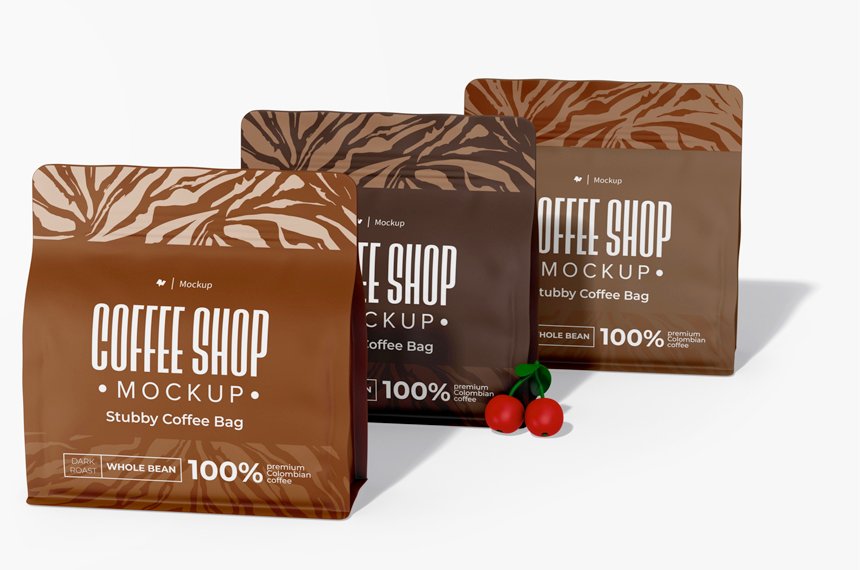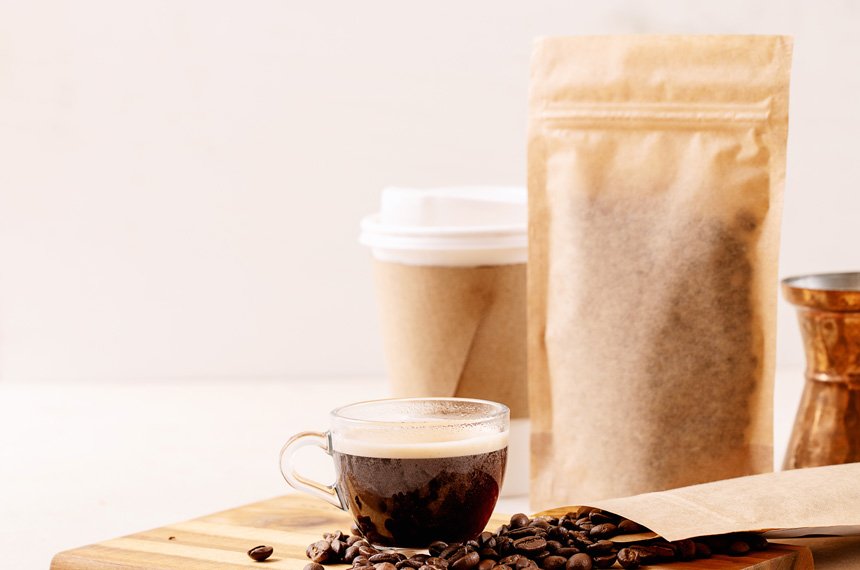Too many options of packaging types on the market. Makes it hard for us to determine when selecting packaging for our products. The packaging is classified into two categories rigid packaging and flexible packaging.
What is the difference between them? How can I find suitable packaging for my products in these two types?
Well, their main difference is that it is better for your products to use if you choose to replace rigid packaging. In terms of protecting and prolonging the product’s life. It’s more efficient, affordable, and convenient compared to rigid packaging.
Let’s elaborate on their difference to help you choose which suitable packaging is for you.

The definition of rigid and flexible packaging
Rigid packaging, as the name implies, is as inflexible as its definition, and can not be bent or deformed. These provide strong structure and support for products during product transportation and handling. Rigid packaging includes tin cans, glass bottles or jars, paperboard boxes, plastic bottles, or boxes.
On the other hand, the definition of flexible packaging can bend easily without breaking. Flexible packaging is often sealed with heat or pressure. It can be shaped with customized size variations.

The advantage of rigid packaging
market share
At present, rigid packaging still occupies the main packaging market. According to the PFA report, the global rigid packaging market will reach 800 billion U.S. dollars in 2024. On the other hand, the flexible packaging market is projected to reach 299 billion U.S. dollars. The flexible packaging market has not yet crossed 40% of the relative rigid packaging market.
For that reason, the current mainstream desire of consumers is to prefer rigid packaging for their products. More importantly, rigid packaging applies to a wider range of industries and markets. Not only from the food industry but also to the chemical and chemical industries. A safe and trusted packaging partner.
Strength and durability
When you want to transport some fragile products that are not compressible, such as computer screens, smartphones, televisions, cameras, and other electronic products. Rigid packaging can protect the internal products during transportation or handling.
The volume itself provides a strong structure and support. Adding protective plastic foam or air pillow to the extra space inside as a second line of defense. This will ensure that these high-value and large-volume products safely reach the customer’s hands.

Representative of luxury
Rigid packaging existence not only provides structure and support but more importantly, can also bring out the brand’s potential. Rigid packaging has always been the driving force in high-end consumer brands. Such as high-end beverages, perfumes, special beauty, and health products, medical supplies, and some chemical products. For example: like LV, Dior luxury brands will use crystal clear glass bottles to fill their perfumes and put them on the shelves.
With that, it will draw the customers’ attention. As a symbol of high-end brands, the exquisite packaging strengthens their brands. Consumers are willing to spend a high price for them because they are well-known.

The advantage of flexible packaging
Light-weighing
In terms of size and weight, rigid packaging uses thicker and heavier materials. Comparative flexible packaging is mainly composed of plastic film, aluminum foil, and paper. Flexible packaging is much lighter than rigid packaging for items of the same weight. For example, tin cans account for 40% of the total weight of the canned fruit we buy in the store.
On the other hand, in soft-packaged beverage products, the packaging weight of the spout bag only accounts for less than 10% of the total weight. This means that if brands are already using rigid packaging. They should consider switching to flexible packaging to reduce their packaging cost
For manufacturers and retailers, there is an exciting advantage of reducing weight. It can reduce transportation and storage costs while creating more display space on store shelves.
To illustrate that flexible packaging saves more space. A 20CBM cubic truck with stand-up bags is equal to 10-15 trucks with rigid packaging such as tins for packing the same volume of the products. So reducing weight means helping companies increase product sales and profits.

Customize various shapes and designs
Why more and more brand owners are more willing to choose flexible packaging? The increasingly fierce branding and individualized competition. Make brand owners devote more attention to differentiation in packaging design.
In terms of personalization, flexible packaging is easy to customize to a distinctive shape and size due to its flexibility. With that, it can stand out from the shelf better. For example, we can customize the shape of the packaging according to the appearance of the car. Which is enough to surprise consumers.
For the design, the printing of rigid packaging is difficult and a more expensive option. For instance, when we need to display product information on the packaging. We must print the design separately on the label, and then paste it on the rigid packaging. This not only increases packaging costs but labor costs as well.
Inflexible packaging, we can use intaglio or digital printing to realize our unlimited creativity on our packaging. Its printing is vivid and unconstrained. You can print your brand’s story, your product picture. Which can attract more customers that are willing to promote your packaging and your brand on social platforms.

Convenience for consumers
Many companies and consumers have seen the benefits of shifting from rigid packaging to flexible packaging. The transition would provide greater comfort for customers. For example, we can choose a feature zipper or spout cap on the self-supporting bag to save and reuse products.
The ergonomic shape of the function plastic handle can be made on the rice bag. Which makes it easier for consumers to hold the bag.
We can also feature a tear notch at the opening of the bag. So consumers can open the bag and enjoy the food at any time without pressure, unlike rigid packaging that requires tools. We are developing our packaging products from the perspective of consumers. Yes, this has always been a decision to be supported.
Sustainable goals
As for the impact on the environment. We still have a lot to consider in comparing rigid and flexible packaging. According to perfect packaging, “When you consider the choice of packaging materials, you need to consider more factors like the entire life cycle of the packaging and which material is environmentally friendly.” But how do we understand rigid packaging and the impact of flexible packaging on the environment?
When it comes to transporting packaging. Flexible packaging is much lighter than rigid packaging. This means that we only need fewer trucks to transport than rigid packaging. Saving more fuel and reducing carbon dioxide emissions resulting in fewer carbon footprints.
Considering the energy required for production. The energy required to produce rigid packaging such as tin cans is about 10 times that of flexible packaging. The water that needs to be consumed is 15 times more than that of flexible packaging. Which is equivalent to generating a large amount of wastewater that will pollute the environment. This leads to the eutrophication of water bodies.
When we compare recyclables, we find that 90% of rigid packaging can be recycled and 50% of rigid packaging eventually ends up in landfills. This is due to customers’ inappropriate recycling processes and packaging residues. Rigid packaging uses up more space in landfills than plastic packaging if it is not recycled.
The continuous innovation of plastic packaging technology has made recycling flexible common. We can turn it into raw material for construction and plastic products through mechanical recycling. We can also turn it into a high-energy chemical fuel through chemical recycling.
Rigid packaging and flexible packaging also have the advantage of being contentious. We can find a balance between them when we need some of their features:
Barrier
When we previously chose rigid packaging, we wanted to prolong the shelf life of our products by using heavy and special-functional materials as a protective barrier. For example, we use aluminum cans to package our seafood products to prevent taste deterioration. We use glass Bottles to pack our drinks and alcohol to prevent the volatilization of liquids.
With the continuous update and development of flexible packaging technology. We can now pack our products with lightweight and more cost-effective materials. To replace the attributes of rigid packaging. For example, we can use multilayer-materials laminated to provide strong barrier properties.
To pack our food, beverage, and wine materials. The nylon and PET materials in the multilayer-material can provide a strong oxygen barrier as the first line of defense. AL can provide a strong shading, oxygen, and waterproof second line of defense. While PE or CPP can provide rigidity to support the fastness of the bag. The benefits of such a packaging solution are truly incredible.
Storage in a special environment
.Most of the time we choose rigid packaging. Because of their thick and special materials that can adapt to various environments. We need them to store our products in a frozen environment or cooked and sterilized in a high-temperature environment. Their minimum requirement is to ensure that the packaging is not damaged under these conditions.
Conclusion
Each type of packaging has its meaning and focuses on the needs of the product. If you are looking for the right packaging for your brand, you have several options to choose from. Xiaoyu Packaging offers you a packaging solution that suits your products according to their needs. So if you still have questions or inquiries feel free to leave us a message and we will be happy to get back to you.





